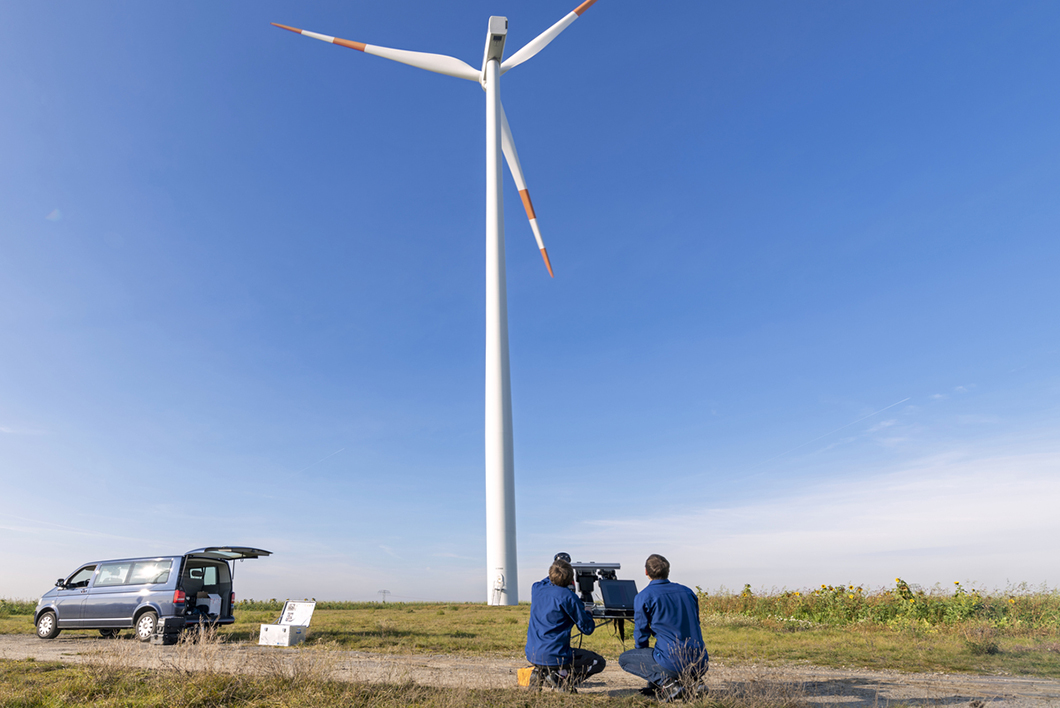
With an infrared camera, damage causing turbulence on the rotor blades can be detected in good time.
Source: BAM
The Bundesanstalt für Materialforschung und -prüfung (BAM) and the Marburg-based start-up LATODA have developed a novel method to increase the energy yield of wind turbines. In the process, the rotor blades are checked for erosion using thermography and artificial intelligence. The early detection of damage on the surface helps to improve the efficiency of a turbine.
The novel inspection procedure has now been successfully tested in a feasibility study led by BAM. In this process, erosion damage to the rotor blades is made visible through thermographic images taken with an infrared camera. The damaged areas, in turn, are caused by raindrops; they cause turbulence in the airflow on the surface of the rotor blades and are thus lead to performance losses of the wind turbines. The turbulences are visible on thermal images of the rotor blades. By detecting and categorising them, maintenance can be planned and carried out in a more targeted manner. Overall, the performance of wind turbines can be increased by up to two percent on an annual average.
The thermographic inspection of rotor blades, in which a camera system takes pictures from the ground, only takes about ten minutes. Compared to conventional inspection procedures with industrial climbers, which usually take 2-3 days, this already leads to a high increase in efficiency, because downtimes due to inspections alone can be avoided. The thermograms are then analysed with complex image processing and AI algorithms, registering and marking the smallest temperature differences on the surface of the rotor blades. Next to other things, they indicate erosion damage caused by rain. Thanks to the automated data evaluation, maintenance and repair work can be planned much more efficiently than before. At the same time, the inspection procedure is much cheaper than previous inspections and can therefore be carried out more frequently. Thus, incipient damage can be detected at an early stage and repaired before in-depth repairs become necessary.
Michael Stamm, head of the project at BAM, explains: "The inspection of rotor blades using thermography is a very fast and innovative method. However, you need a lot of experience and technical understanding when it comes to evaluating the images generated. Here, an automated image evaluation with artificial intelligence represents a great potential to decide even faster and more reliably after the measurement which concrete measures are to be initiated by the operators of the turbines."
"The developed software with AI algorithm can also be transferred to other fields of application in the field of wind energy, such as the categorization of structural damages inside the rotor blades. This would allow fractures and other material damages to be detected in good time and unplanned operational interruptions to be avoided," says Lars Osterbrink, technical project manager at LATODA.
The results of the study will be presented at an open workshop at BAM on 02.03.2023 and discussed with representatives from science, industry and certification bodies. More about the registration here.


